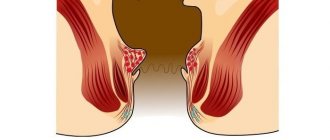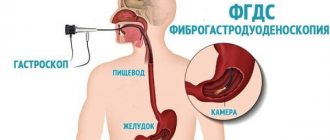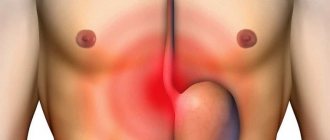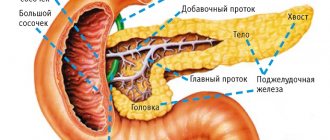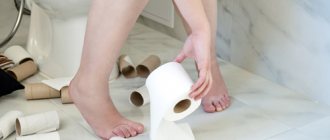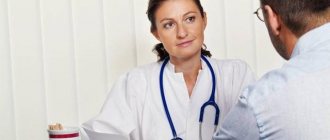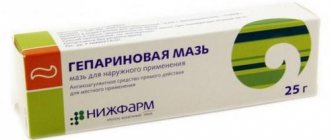Hemorrhoids are a pathology of rectal veins affected by varicose veins. They may differ in their location, and during their development they go through several stages. This disease is diagnosed regardless of the age category and gender of a person, which is why it is not uncommon among children and pregnant women.
- Etiology
- Classification
- Symptoms
- Diagnostics
- Treatment
- Possible complications
- Prevention and prognosis
A wide range of etiological factors can serve as the source of the disease, for example, obesity, poor nutrition, other diseases or genetic predisposition.
For a long time, a hemorrhoidal node can occur without expressing any symptoms. However, it is noteworthy that the disease has quite specific clinical manifestations.
To make a correct diagnosis and distinguish hemorrhoids from other proctological ailments, several examinations of the patient will be required - laboratory and instrumental.
The tactics of how to remove hemorrhoids directly depend on several factors - the severity of the pathology, the presence of concomitant pathologies and complications.
Etiology
The formation of cavernous nodes is preceded by several processes - increased intra-abdominal pressure, weakness of the blood vessels and walls of the rectal veins, as well as blood stagnation.
The following situations can lead to the emergence of such processes:
- Physical inactivity is a lack or complete absence of a person’s physical activity. This can happen for three reasons. The first is a serious illness due to which the patient cannot move, the second is working conditions in which you need to sit or stand for a long time, the third is the most harmless, consisting in the basic laziness of a person;
- uncontrolled use of certain groups of medications or non-compliance with the dosage prescribed by the attending physician;
- abuse of alcoholic beverages, nicotine and narcotic substances;
- stool disorder - chronic constipation, as well as profuse diarrhea can lead to the formation of lumps;
- whether a person has any stage of obesity;
- heavy physical activity;
- prolonged influence of stressful situations and nervous overstrain;
- poor nutrition or lack of a routine - this includes frequent snacks on the go or regular overeating, ingestion of fatty and spicy foods, marinades, smoked meats, pickles, fast food, confectionery and soda;
- the period of pregnancy and the immediate process of the birth of a child are the main causes of exacerbation of inflammation of the hemorrhoidal node in female representatives;
- menstruation;
- a wide variety of diseases of the gastrointestinal tract or cardiovascular system.
It is worth noting that proctologists do not exclude the possibility of a genetic predisposition to this pathology. If hemorrhoids have been diagnosed in one of your close relatives, this significantly increases the likelihood of the pathology developing in the next generation.
Etiology and symptoms of hemorrhoids
The occurrence of hemorrhoids can be caused by:
- Congenital causes, such as hereditary diseases of blood vessels and connective tissue.
- Acquired causes, and it can be a separate, independently occurring disease, or it can occur against the background of diseases of the gastrointestinal tract, cirrhosis of the liver, prostatitis.
The clinical picture of the disease depends on the nature of the course and stage of the disease. Hemorrhoids in very rare cases occur acutely. Often this is a chronic process with periodic episodes of relapses and exacerbations in the form of thrombosis of hemorrhoidal veins. One of the reasons for this phenomenon is that due to the sensitivity of the problem, people rarely seek medical help. Without timely comprehensive treatment, hemorrhoids acquire a long, sluggish course.
The disease begins slowly , the patient may at first not pay attention to the discomfort and not attach importance to it. Initially, there is a sensation of a rounded protrusion, itching in the anus, and often a moderate amount of discharge, colorless and odorless, may appear in this area.
Gradually, the mucous membrane of this protrusion becomes more and more injured, the integrity of the capillaries is disrupted, and bleeding occurs. First, the person notices a few drops of fresh blood at the end of a bowel movement, and then it begins to flow out in streams.
Classification
In the medical field, there are several types of cavernous nodes. The first of them involves the division of venous neoplasms depending on their location. Thus they are divided into:
- external - represent the rarest type of disease and are characterized by the fact that the nodes were formed under the skin that surrounds the anal area. Diagnosis is not difficult, since at the stage of physical examination the presence of one or more lumps is noted. Treatment of external hemorrhoids does not cause difficulties for clinicians. Rectal ointments and non-invasive techniques can be used in therapy;
- internal - considered the most common type of such formations, since they form under the mucous layer of the rectum. Such bumps with hemorrhoids require a more thorough examination of the patient. They need to be treated with suppositories and minimal surgical intervention;
- combined – are a sign of a complicated course of the disease, since signs of the two above-mentioned forms are present.
Types of hemorrhoids
Classification depending on the severity of the inflammatory process involves the identification of several forms, which will differ in their symptoms and the basic principle of treatment. Thus, we distinguish:
- mild degree - in the vast majority of cases it is not expressed by any clinical manifestations. No prolapse of hemorrhoids is observed. Diagnosis occurs completely by chance, and treatment is based on conservative methods and sclerotherapy of hemorrhoids;
- moderate course - it is at the second stage of development that symptoms begin to appear. A characteristic feature is that the enlarged nodes fall out during defecation, but then reset on their own. Treatment of such hemorrhoids requires an integrated approach;
- severe course - characterized by a more vivid expression of clinical signs, and also by the fact that after the hemorrhoids fall out, they cannot return to their place; for this, the person needs to reset them himself, which causes pain and discomfort. The basis of therapy is surgical intervention, and conservative methods are necessary to consolidate the positive result;
- complicated phase - based on the name, it becomes clear that complications develop, the most common of which are strangulation of the node, heavy rectal bleeding and the formation of a blood clot. Surgical removal of hemorrhoids is the only way to get rid of the disease.
Prevention of hemorrhoids
After removal of hemorrhoids, preventive measures are very important to prevent relapse of the disease. They will also help patients with a family history, but who do not yet have the disease.
To prevent hemorrhoids in women and men, the following are recommended:
- Proper nutrition. It should be enriched with fiber, which is a stimulator of intestinal motility. This is an excellent means of preventing and treating constipation (see diet for constipation).
- The optimal water load is at least 2 liters per day. Liquid is necessary for the incoming fiber to swell in the intestines.
- Physical activity. It is enough to take regular walks at an intense pace.
- Limiting heavy lifting. It is advisable not to lift a load weighing 5 kg or more.
- Maintain perineal hygiene after each act of defecation (it is recommended to wash with cool water, which reduces blood flow to the rectum).
- Regular exercise that trains the pelvic muscles. The simplest thing is to squeeze and unclench the anus.
Symptoms
Clinical manifestations of the disease are usually divided into the first and main ones.
The first signs are mild and appear periodically, which is why patients often do not pay attention to them. However, the initial symptoms are:
- itching and burning in the anal area;
- bloody spots that can only be seen on toilet paper;
- defecation disorder;
- swelling of the perianal area;
- discomfort and sensation of a foreign object in the rectum.
If a person seeks medical help when experiencing such symptoms, treatment will be conservative or sclerotherapy may be used, as well as latex ligation of hemorrhoids.
Ignoring such symptoms will lead to:
- the appearance of intense pain;
- increased itching and burning;
- pronounced and constant discomfort;
- redness and swelling of the skin around the anus;
- the appearance of mucus and blood impurities in the stool. If before this rectal bleeding was expressed in a few drops of blood, then as the disease progresses, the intensity may increase to a stream;
- prolapse of hemorrhoids; attempting to set them back will cause severe pain;
- anal fissures.
Often, such symptoms indicate that the node has become very inflamed and increased in size. In such cases, therapy will consist of minimally invasive procedures, for example, ligation of the hemorrhoid.
Treatment with traditional recipes
During the treatment of hemorrhoidal cones, medications made independently from natural ingredients can be used. Lotions, compresses, decoctions, suppositories, and ointments are widely used in folk medicine.
- Hot steam baths. Boil several onions in milk for 30 minutes. After this, the liquid is poured into the bath. You can sit over the steam until the decoction is completely cooled.
- Chamomile candles. Dry herb (30 g) pour boiling water (200 ml), leave and pour into prepared molds. Then place in the freezer. You need to take it as needed. The icy composition copes well with swelling, relieves heat and inflammation. The vessels narrow and blood begins to circulate better. Chamomile has a bactericidal and analgesic effect.
- Honey candles and lotions will help relieve inflammation. How to cure inflammation with this remedy? It is better to form candles from candied honey. You can apply honey to a gauze cloth and apply it to the affected area.
- How to get rid of hemorrhoids using potato suppositories? To do this, cut a candle from the core of the tuber and insert it into the rectum, after smearing it with Vaseline.
- Treatment of hemorrhoids can be done using ointments made from any herbal decoction and petroleum jelly.
It should be borne in mind that self-medication does not always lead to recovery. If the chosen treatment method does not help get rid of the disease, you need to consult a doctor and change your tactics.
Diagnostics
A proctologist knows how to get rid of lumps and diagnose them.
Establishing the correct diagnosis and the possibility of differential diagnosis implies the implementation of a whole range of measures, including:
- clarification of complaints;
- examination by the clinician of the medical history of the patient and his close relatives;
- a thorough physical examination and digital examination will help distinguish an external hemorrhoid from an internal one;
- laboratory blood test;
- microscopic examination of feces;
- anoscopy and sigmoidoscopy – to clarify the location and number of nodes;
- colonoscopy and irrigoscopy;
- Ultrasound of the abdominal organs.
Irrigoscopy procedure
Only after studying the results of all diagnostic measures, the clinician draws up a treatment strategy for hemorrhoids individually for each patient.
Treatment methods
Drug treatment
Any person, when a disease occurs, wants to get rid of it in the shortest possible time, using the least traumatic methods. In the initial stages of hemorrhoids, conservative treatment is indicated. It helps to reduce the intensity of the symptoms of the disease, reduce the activity of inflammation, eliminate itching and discomfort, and also reduce the size of the node. For this purpose, medications are used mainly for local action in the form of suppositories and ointments.
The most common drugs are: Relief , Troxerutin , Posterisan , Proctosan , Procto-Glivenol . In addition, most of these drugs are also available in tablet form, for example Troxerutin and Relief; very often doctors prescribe Detralex and Phlebodia to provide a venotonic effect. Their action is aimed at strengthening the vascular wall, as well as thinning the blood and preventing thrombus formation.
Taking tablets with the simultaneous use of ointments or suppositories accelerates the onset of therapeutic effects due to local and systemic action.
Surgical treatment
Unfortunately, people rarely go to the doctor at the first manifestations of the disease, and advanced forms of hemorrhoids require only invasive treatment. Modern proctology offers the following techniques:
- Traditional node removal, performed under general anesthesia, during the operation the doctor removes all internal and external nodes.
- Ligation – ligation of pathologically altered hemorrhoidal veins.
- The use of latex rings, which are installed at the base of the node, as a result of which the vessels are pinched, and the node is significantly reduced, and then necrotizes and falls off.
- If the size of the nodes is too large, then special auxiliary procedures are used to make surgery more convenient and reduce the risk of bleeding.
- Infrared photocoagulation is the treatment of a vein with special radiation, as a result of which its walls stick together and overgrow, which leads to a reduction in hemorrhoidal cones.
- Sclerotherapy is the introduction of special substances into the vessel that cause a burn.
- The inner lining and closure of the lumen of the vein.
In addition, the last two methods can be used independently to combat small hemorrhoids.
Treatment
Treatment for such a disorder will vary depending on the severity of its course.
The easiest stage is treated:
- conservative methods;
- disarterization and sclerotherapy of hemorrhoids.
Conservative treatment tactics include:
- taking pills for hemorrhoids;
- the use of ointments and suppositories for local effects;
- performing physical therapy exercises;
- diet therapy.
Treatment at home includes:
- complete cessation of bad habits;
- ingestion of medicinal drinks based on medicinal herbs and plants;
- performing sitz baths and microenemas based on herbal ingredients;
- preparation of ointments and suppositories from natural and natural ingredients.
The second degree of severity of the disease is treated:
- conservative methods described above;
- disarterization of hemorrhoids;
- cryodestruction;
- infrared coagulation;
- ligation with latex rings.
A severe course of the disease can only be cured:
- ligation of hemorrhoids with latex rings;
- open surgery.
Conservative methods of treating hemorrhoids are used as adjuncts.
A complicated form of this disease involves:
- hemorrhoidectomy;
- hemorrhoidopexy;
- disarterization of hemorrhoids.
Disarterization of hemorrhoidal node
Other methods of therapy are inappropriate.
During pregnancy
Prolapse of hemorrhoids is sometimes recorded in the early stages of pregnancy, but more often the pathology is observed in the last months of gestation. This is explained by the fact that as the size of the uterus increases, functioning blood vessels are compressed. The likelihood of node formation is influenced by the age of the pregnant woman, the state of her circulatory system and the body’s tendency to constipation.
If nodes appear outside, a pregnant woman should:
- Urgently contact a proctologist to prevent complications during and after childbirth;
- Take medications that contain lidocaine or anesthesia (if the woman is in the first months of pregnancy). When the pathology began to bother you in the second trimester, it is recommended to use Gepatrombin G rectal suppositories and take Detralex tablets. All medications should be used only after consulting a doctor.
Minimally invasive treatment methods can be used for a pregnant woman who has prolapsed nodes:
- Sclerotherapy;
- Ligation with latex rings;
- Laser therapy;
- Cauterization with infrared rays.
Pregnant women are advised to follow certain instructions:
- Keep the anus clean;
- Eat fresh vegetables, fruits, oatmeal, drink about 1.5 liters of water per day;
- Move little;
- Perform a cleansing enema;
- If necessary, take laxatives.
Loss of nodes during pregnancy can be dangerous. When bleeding, a woman often develops anemia, and a deficiency of hemoglobin can negatively affect the development of the fetus.
When an infection gets into the prolapsed node, a purulent-inflammatory process appears. The condition is fraught with the risk of toxins and pathogenic particles entering the bloodstream and subsequently reaching the fetus.
There is a manifestation of hemorrhoids during childbirth. Pathology complicates the course of labor. A caesarean section is considered mandatory if the prolapse is accompanied by heavy bleeding.
Possible complications
Asymptomatic onset, ignoring clinical manifestations, and lack of adequate treatment can lead to the following complications:
- pinching of the node, and the doctor will note its cyanosis;
- blood clot formation - elimination of such a complication requires thrombectomy of the hemorrhoid;
- anal fissures of varying severity;
- proctitis and paraproctitis;
- severe bleeding leading to anemia;
- anal sphincter insufficiency.
Causes of increased pressure in hemorrhoidal veins
What is a "hemorrhoidal node"? If we remember the basics of anatomy, at the end of the human intestine there is a rectum, located above the sphincter of the anus. In this zone there are hemorrhoidal veins, most often in the form of three large nodes above the anal sphincter and the same number directly below it. These veins twist and normally do not expand. Their functions are to help the sphincter completely retain gases and feces until a certain point. But when, for many reasons, they experience overexertion, the stress increases intra-abdominal pressure, and this leads to congestion of the venous system.
As a result, hemorrhoids appear: internal, located above the sphincter (internal hemorrhoids), or external, located subcutaneously, behind the sphincter (external hemorrhoids). There is also a mixed (or combined) version. With inadequate load, the venous plexuses enlarge, the blood flow in them slows down and the blood clots. In the absence of adequate treatment, the nodes begin to fall out, and the blood clot turns into a thrombus.
This condition is provoked by many reasons, among the main factors:
- Straining - lifting weights (at home or in the gym), childbirth, unformed liquid or too hard stool, anal sex, stress.
- Venous stagnation is caused by a sedentary lifestyle. Particularly harmful in this regard are squatting, in deep chairs, and prolonged sitting on the toilet (normally, defecation lasts up to 5 minutes).
- Errors in nutrition are eating habits that provoke disturbances in the rhythm of bowel movements, intestinal irritation and obesity.
- Abuse of alcoholic beverages, which increases the flow and stagnation of blood in the abdominal cavity.
- Genetic predisposition - the formation of cavernous tissue from which hemorrhoids are formed occurs even at the embryonic stage of fetal development.
If the nodes come out, regardless of the subjective sensations in the body, an inflammatory process begins. It is at this moment that treatment should begin. Hemorrhoids can be recognized by specific signs:
- pressure in the anus, sensation of a foreign body in the rectum;
- the impression of partial emptying of the intestines at the time of defecation;
- burning and itching around the anus (the exudate released during inflammation is irritating, which is why in Rus' hemorrhoids were called kidneys);
- bleeding of any intensity;
- painful stool, discomfort after visiting the toilet;
- knots that fall out during defecation or straining.
If there is no bleeding or severe inflammation, hemorrhoidal cones can be reduced by hand in the early stages. The procedure has some features:
- Cleanse the intestines (naturally or with an enema);
- Wash the perineal area with cool water;
- For pain, anesthetics such as Troxevasin can be used;
- To avoid infection, it is advisable to perform the procedure with gloves;
- The fallen lump is carefully pushed into the rectum and the buttocks are squeezed;
- The procedure is best performed lying on your side, with your limbs pressed to your body;
- You should remain in this position for at least another half hour; if you need to get up, wear underwear a size smaller to tightly compress your buttocks.
If the disease progresses, the hemorrhoid becomes dense and changes color from burgundy to purple.
Even if there are no visible signs, it is worth getting tested. Like any disease, hemorrhoids are easier to prevent and treat in the early stages than to solve the problem on the operating table.
Prevention and prognosis
To avoid the appearance of hemorrhoids, their prolapse and inflammation, you must follow simple rules:
- promptly deal with constipation and other pathologies that can lead to problems;
- lead a healthy and moderately active lifestyle;
- If possible, avoid any overvoltage;
- strengthen the abdominal and pelvic muscles;
- control body weight;
- eat properly and rationally;
- undergo examination at a medical facility several times a year.
Only if all medical recommendations are followed, the outcome of the disease will be favorable, but it worsens as complications develop. After resection of the hemorrhoid, the life of patients quickly returns to normal.
Latex ligation procedure and review of reviews about it
Latex ligation is a minimally invasive operation. Its essence is to apply a latex ring to a vascular formation using a hemorrhoidal ligator. The node is rejected on its own 9-12 days after the procedure.
Judging by reviews of latex ligation of hemorrhoids, the procedure is almost painless. Patients experience discomfort during the painkiller injection. The entire procedure lasts on average 20 minutes.
Patients claim that with the right lifestyle and diet, the procedure helps to get rid of hemorrhoids forever.
The disadvantages include bleeding during bowel movements for 3 weeks after the procedure.
Treatment using “grandmother’s” recipes
Traditional medicine offers you many simple and effective recipes that allow you to remove hemorrhoids in a relatively short time. Their use involves fairly economical ingredients. Treatment using “grandmother’s” methods is much cheaper than standard methods of traditional medicine. But consultation with the attending physician is also required in this case, since even such herbal preparations may have contraindications and restrictions on use.
Such preparations can be intended for oral administration (decoctions and infusions) and for local use (ointments, lotions, compresses, sitz baths, homemade suppositories).
The following recipes for decoctions and infusions exist:
- Yarrow. For preparation, dry collection of this plant is used. It is needed in the amount of two tablespoons. The raw materials are poured with 500 ml of boiling water and infused in a sealed container for 3 hours. You need to drink the resulting composition three times a day, in portions of about 50 ml each.
Folk remedies include sitz and steam baths, various lotions and ointments made from natural ingredients - Kidney mountaineer. Take 100 ml orally four times a day. Prepare by infusing 4 tablespoons of the dry mixture of the plant in one liter of water in a water bath. The procedure lasts about two hours.
Microenemas containing plant elements are also used, for example:
- Flax seeds. Microenemas for hemorrhoids are made on the basis of an infusion, the preparation of which consists of infusing one tablespoon of seed in a glass of hot water for three hours. The size of the microenema is no more than 100 ml of the resulting liquid. Thanks to it, the cones resolve faster.
- Calendula or chamomile. The basis is an infusion prepared as follows: a small spoon of dried flowers is brewed with 250 ml of boiling water.
How to dissolve hemorrhoidal cones, in addition to the above methods? Another effective remedy for hemorrhoids are sitz baths created by collecting medicinal herbs. For example, take horse chestnut seeds, crushed oak bark, sage, chamomile flowers - only three teaspoons of each ingredient. You will also need 600 ml of hot water. Leave to infuse, then strain and pour into a container for a sitz bath (basin or small bucket). The frequency of the procedure is twice a day, the duration of the procedure is no more than 15 minutes.
Other methods of therapy include such folk antihemorrhoidal techniques as: compresses with decoctions of medicinal plants (chamomile flowers, sage, calendula, wormwood)
What can I do to make the lump disappear? Self-made ointments can be used both for their intended purpose and for lotions or compresses. They will help soothe painful sensations, relieve inflammation and help hard, inflamed nodes resolve. To do this you need to take the following ingredients:
- tobacco;
- butter;
- honey;
- petrolatum.
Next, you need to make a homogeneous mass out of them, which must then be rubbed through a fine sieve. The last step in preparation is to place the finished product in a cool place, such as a refrigerator. You need to smear hemorrhoids several times a day, you can also supplement the composition with “Streptocide”. It will prevent bleeding lesions from becoming infected. Resorption of hemorrhoids in this case is more likely. Can hemorrhoids resolve with root vegetables? Potato and beet suppositories help well with internal hemorrhoids. It's very easy to make them. To begin with, the root vegetable is thoroughly washed, and then a small candle needs to be cut out of it. At the same time, we must not forget that it must then be pulled out carefully and without much effort, as this can damage the mucous membranes of the rectum.
Another wonderful way to alleviate the condition and resolve hemorrhoids can be candles made from candied honey, but they should only be used if you are not allergic to this beekeeping product. To make it easier to form a kind of suppository, honey needs to be kept in the refrigerator for some time. If a burning sensation occurs, the candle should be pulled out immediately.
So, can cones resolve when using traditional medicine? If external nodes appear, experts recommend washing the affected area of the body with cool water after each act of defecation. It is also advisable to stop using toilet paper. It can be replaced with wet wipes that have hypoallergenic, disinfectant, antibacterial or antiseptic properties. With this approach, the node resolves faster.
Treatment through traditional medicine
Such treatment achieves its greatest effectiveness in the early stages of the disease. Reduction can be achieved by using ointments for external hemorrhoids, gels, and rectal suppositories.
In some cases, only direct use will help you understand which ointment will be effective for each specific patient.
You can also use tableted drugs “Troxevasin”, “Phlebodia” and “Troxerutin”. Suppositories that have a similar effect include “Relief”, “Posterisan”, “Procto-Glivenol” and “Proctosan”. Complex treatment can be supplemented with Proctosedyl ointment.
The success of the technique depends on the regular use of the proposed means and the obligatory adherence to all recommendations of the attending physician. Such treatment must be carried out in a course. Results should appear within the first week. If they are absent, a second visit to the specialist is necessary; it is quite possible that, due to individual qualities, the treatment regimen may not be suitable for a particular person. In this case, a new technique will be proposed. Medications used in such treatment must have anti-inflammatory, antiseptic and hemostatic effects. In addition, medications are required to normalize blood flow. Their correct selection will ensure a rapid reduction in painful bumps, and as a result, relief from other symptoms.
Treatment may vary depending on the form of hemorrhoids (external or internal) and the nature of the occurrence (hereditary or acquired). Swelling of damaged venous blood vessels with blood can also only be prevented in the first two stages. For subsequent manifestations, such treatment will not be enough.
After all, such measures do not guarantee the stability of the patient’s condition. The nodes may come back and start causing trouble again. The most radical way to get rid of them was, and remains, an operation to excise hemorrhoids.


